LG QNED91T is the only MiniLED backlit television from LG for 2024, attracting attention due to its innovative use of a VA panel. This is a certain departure from the previous standards of the Korean manufacturer in its top LCD televisions, which usually featured an IPS/ADS panel. However, the effect is positive – the panel combined with local dimming offers really good contrast. The blacks are deep and should satisfy most users. LG 65QNED91T6A is truly a bright television, so placing it in somewhat challenging lighting conditions will not pose a challenge for it. In terms of motion fluidity, the QNED91T shows top class. The TruMotion feature works excellently, allowing for adjustment of the image to personal preferences – from classic, cinematic looks to a smoother effect. And the 120Hz panel makes it ideal equipment for sports or gaming. For the latter, LG has prepared something special – four full HDMI 2.1 ports with a bandwidth of 48 Gbps, allowing you to enjoy features like VRR and ALLM (among others). This, combined with low input lag, makes this equipment an excellent choice for gaming on console or PC. Everyday use of QNED91T is pure pleasure, mainly thanks to the WebOS system. The interface is intuitive, there are plenty of applications available, and the included Magic Remote control significantly facilitates navigation through the menu. The operation is quick, and using the television is comfortable thanks to the voice assistant. Unfortunately, the television also has its drawbacks. Despite the advantages of the VA panel in terms of high contrast, the algorithms responsible for local dimming of the miniLED zones do not perform their best. In HDR content, there are situations where the image is either too bright or excessively dark, which is particularly troublesome in scenes requiring precision. Additionally, in practice, the differences between standard HDR10 and Dolby Vision are almost imperceptible. This is a significant disappointment, especially in this class of television. Nevertheless, the LG QNED91T is an interesting choice for those who need a high-brightness television with considerable gaming capabilities and value the convenience of the WebOS system. If image quality in HDR content, such as Netflix, Prime Video, or Max, is a priority, we recommend considering alternative models, for example, OLED B4 from the 2024 line, which can be purchased for a similar price.
- Matching (Score)
- Our verdict
- TV appearance
- Where to buy
- Contrast and black detail
- HDR effect quality
- Factory color reproduction
- Color reproduction after calibration
- Smoothness of tonal transitions
- Image scaling and smoothness of tonal transitions
- Blur and motion smoothness
- Console compatibility and gaming features
- Input lag
- Compatibility with PC
- Viewing angles
- TV efficiency during daytime
- Details about the matrix
- TV features
- Apps
- Playing files from USB
- Sound
LG QNED91T6A vs Hisense E8Q
Direct compare
QNED91T / QNED90T
E8Q

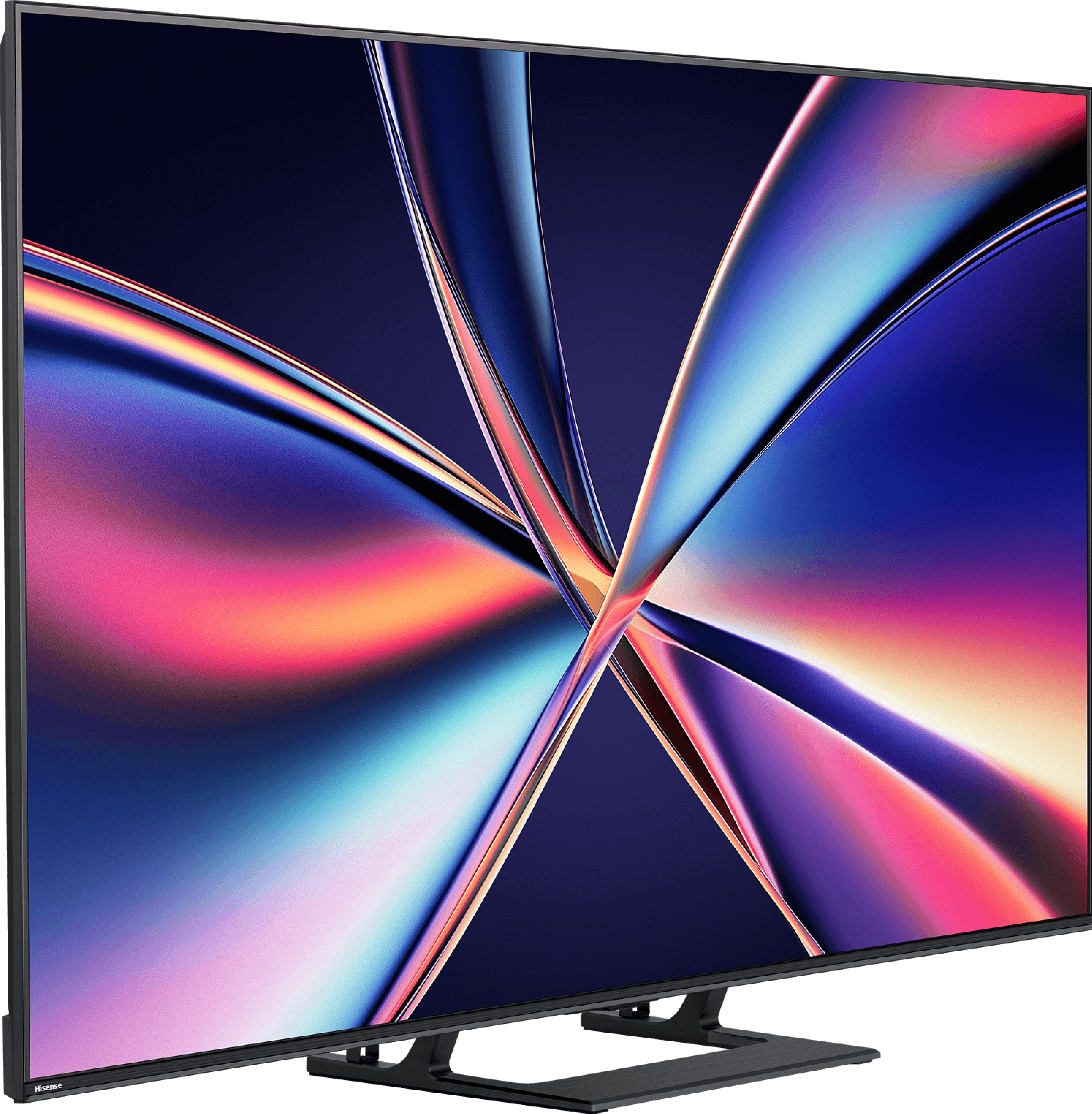
Panel type: LCD VA
Resolution: 3840x2160
System: WebOS
Model year: 2024
Complete the survey to find out the result

Panel type: LCD VA
Resolution: 3840x2160
System: VIDAA
Model year: 2025
Complete the survey to find out the result

Overall rating
7.2
7.0
Movies and series in UHD quality
6.5
6.7
Classic TV, YouTube
6.7
6.8
Sports broadcasts (TV and apps)
6.8
6.5
Gaming on console
8.5
8.0
TV as a computer monitor
7.5
8.6
Watching in bright light
6.1
6.2
Utility functions
9.0
8.9
Apps
8.3
7.7
Sound quality
6.9
5.5
Complete the survey to find out what fits your preferences
Advantages
Decent contrast - VA panel
Suitable for gamers: HDMI 2.1, low input lag, 120Hz
Reasonable brightness - works well for daytime viewing
Great operating system WebOS - Magic Remote, voice features
Recording from built-in tuners
Great contrast and deep blacks
Very good fluidity of tonal transitions (close to reference level)
High brightness
Support for 4K 144 Hz and even 240 Hz in Full HD
VRR, ALLM, G-SYNC – a complete package for gamers
Low input lag
Many classic television features integrated into the VIDAA system
Disadvantages
Poor management of dimming zones
Lack of adaptation in HDR - no noticeable difference between HDR10 and Dolby Vision
Poor viewing angles
No support for HGiG (makes setting up HDR on consoles difficult)
Poor viewing angles – typical for VA panels
Closed VIDAA system – lacks some applications
Inferior sound quality compared to the twin model U7Q
Our verdict
The Hisense E8Q is a television that clearly draws heavily from the U7Q model – and very well so. After all, it is his European version, not another "slimmed down" mutation. Just moments with this screen reveal that the E8Q is putting up a fight. And in many respects, it really succeeds. To start with – what impresses: the blacks are deep, the contrast is high, and the brightness exceeds a level we can simply call satisfactory. Add to this almost perfect fluidity of tonal transitions and we have an image that looks very mature, especially for this price segment. In gaming? Just as good. Support for VRR, ALLM, 144 Hz in 4K and even 240 Hz in Full HD – it's hard to nitpick here. Well… almost. Because the E8Q has one additional flaw compared to the U7Q – sound. In our unit, even at moderate volume levels, the back of the casing began to resonate, generating rather unpleasant crackles. This could be a fault of the test unit, but since the U7Q simply performed better – it’s worth noting. Especially if you find both models at a similar price. We can confidently say that the E8Q is a television that can boldly compete for the attention of those seeking a quality Mini-LED at reasonable prices. If a good price opportunity arises, it is simply worth it – because we get almost the same as in the U7Q. And that means a really solid picture, great gaming features, and overall a very good piece of equipment that one can stick with for a longer time.
TV appearance





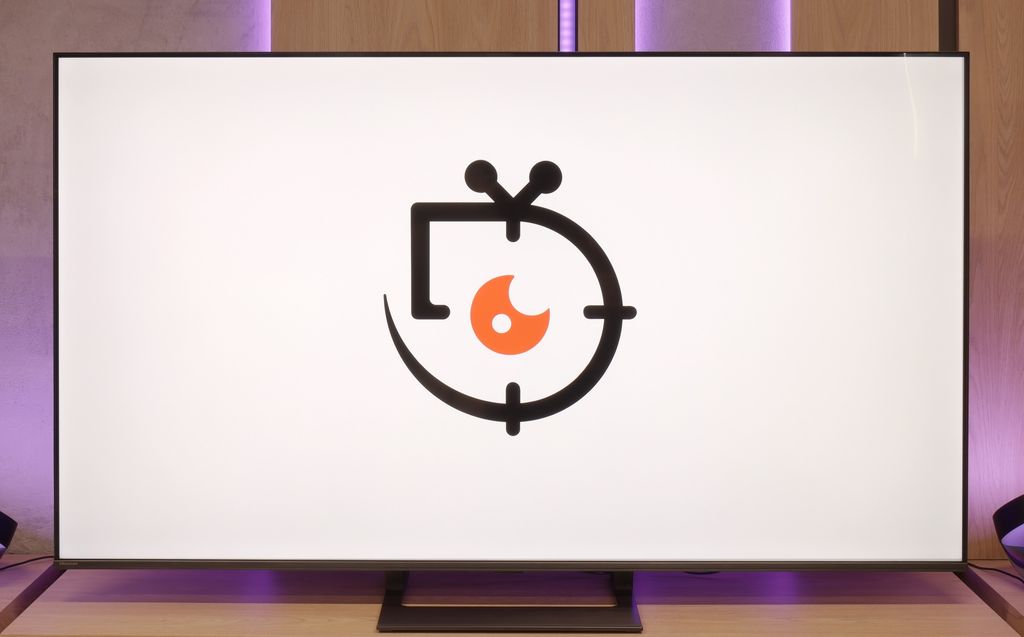
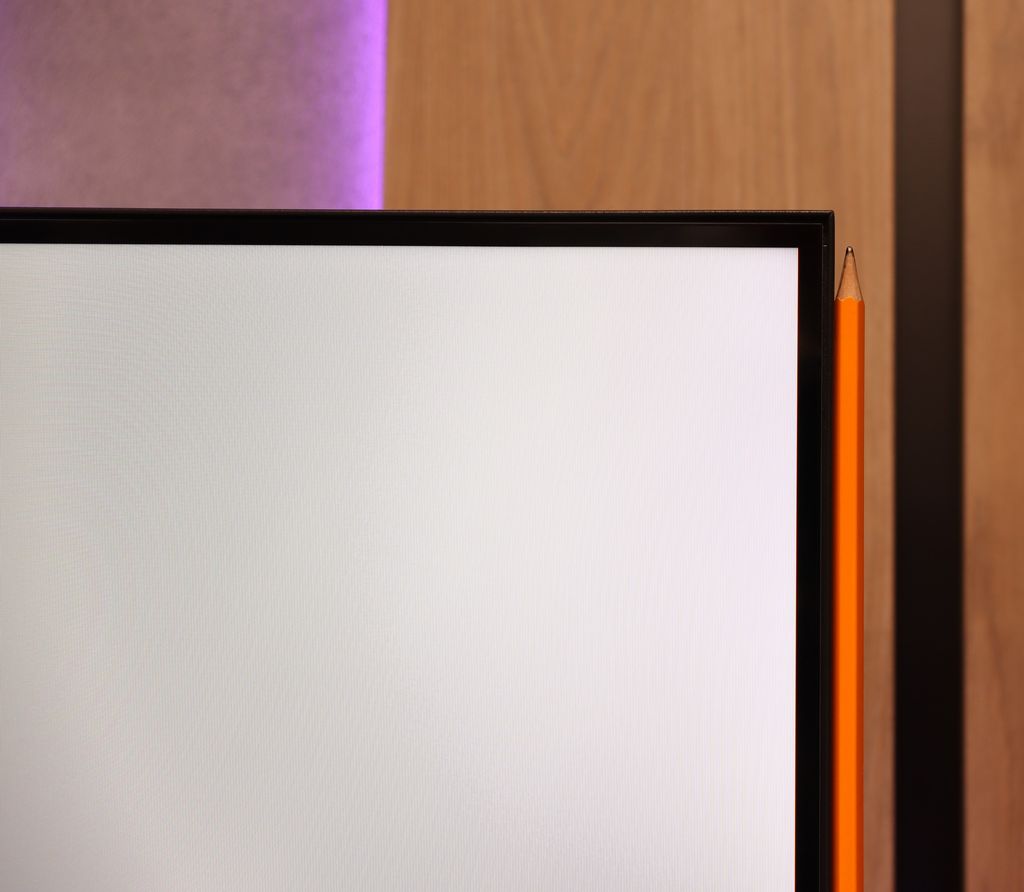
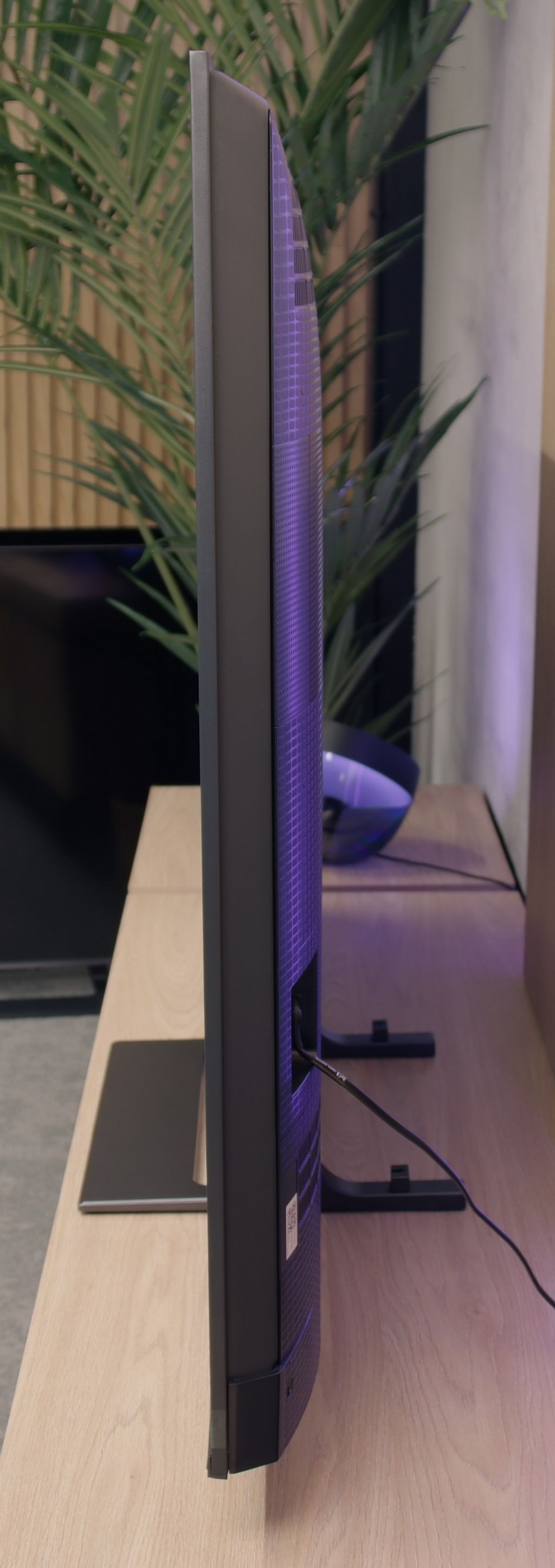
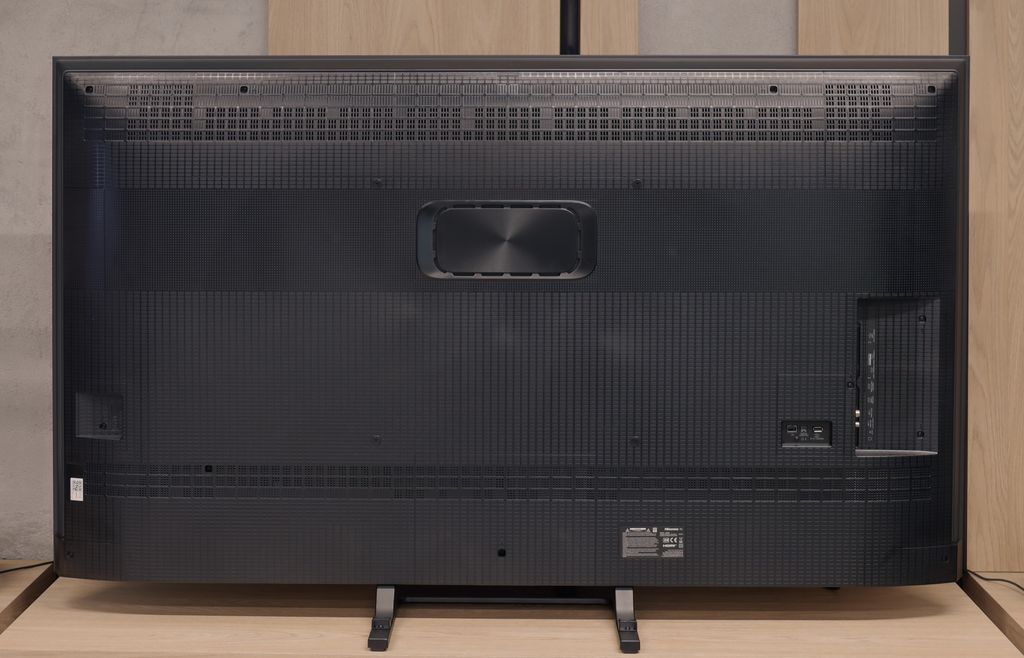
Contrast and black detail
6.8/10
7.6/10
Local dimming function: Yes, number of zones: 160 (16 x 10)
Local dimming function: Yes, number of zones: 220 (10 x 22)
Contrast:

Result
126,250:1

Result
20,900:1

Result
19,200:1

Result
4,900:1

Result
4,550:1

Result
277,000:1

Result
43,700:1

Result
15,750:1

Result
8,850:1

Result
6,350:1
Halo effect and black detail visibility:

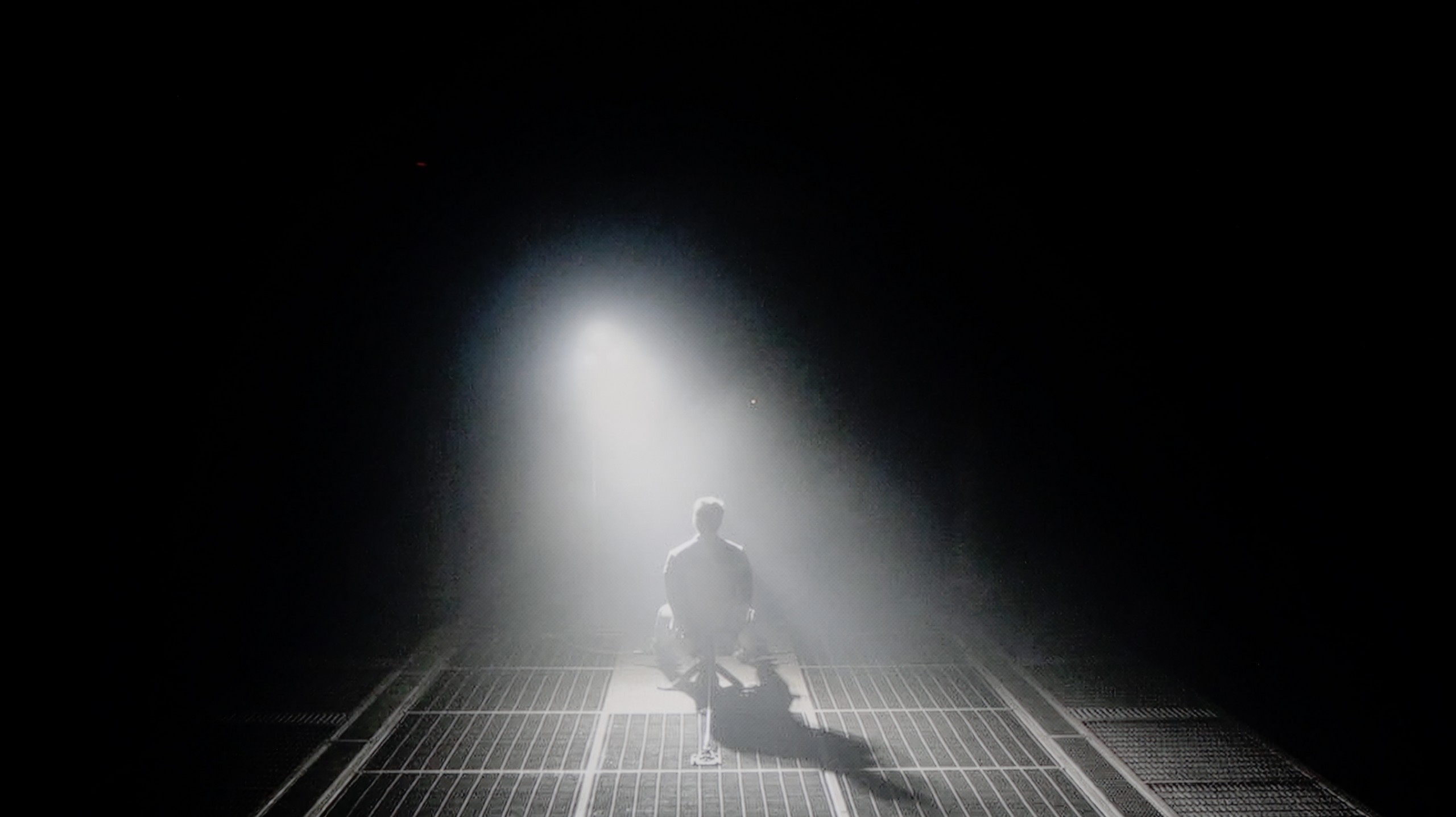
QNED91T is a television with MiniLED backlighting, and in the tested size of 65", we noted 160 zones of backlighting. The specimen we tested, with the "1" suffix at the end, was equipped with a VA panel, which offers significantly better contrast than IPS panels, which - note - can be found in the LG QNED90T. Therefore, it is worth being cautious when choosing a version to avoid disappointment in terms of contrast. The model QNED90T is rather difficult to acquire in Poland, but distribution can vary. Returning to our contrast tests, it performed really well in less demanding scenes. For example, in one scene from the film "Oblivion", we observed perfect light separation - it looked impressive. However, not everything is so straightforward. In a scene from "Sicario 2", we noticed that the screen was noticeably darker, significantly deviating from the reference image appearance. The television effectively eliminates the halo effect (i.e., the glow around objects), but this comes at the cost of brightness - and quite a substantial one. Despite these compromises, the contrast of the LG 65QNED91T6A is really solid. Of course, as is the case with MiniLED televisions, one must reckon with certain limitations, but the overall impressions are very positive.
Similar to the U7Q, the E8Q model uses a VA panel and Mini-LED backlighting. The number of dimming zones also remains at a very similar level – in the 65-inch variant we tested, we counted 220 zones, which is exactly the same as in the U7Q. On paper, this looks really good for this price segment, but even better – in practice. The contrast is high, and the black can be really deep. In many scenes, the lights are clearly separated, and the image gains a sense of depth. This is one of those cases where Mini-LED shows that it can approach the quality of OLEDs – of course, assuming that we understand the limitations we have to contend with. In very challenging scenes, there may be slight brightenings or a small halo effect around bright objects, but these phenomena are typical of this technology and do not stand out strongly. Ultimately – the contrast and blacks in the E8Q are really solid, almost identical to those in the U7Q model. It’s hard to find anything to criticise here, especially when we consider the price of the television.
HDR effect quality
5/10
4.5/10
Luminance measurements in HDR:

Result
1069 nit

Result
180 nit

Result
577 nit

Result
96 nit

Result
674 nit

Result
531 nit

Result
148 nit

Result
320 nit

Result
100 nit

Result
625 nit
Scene from the movie “Pan” (about 2800 nits)


Scene from the movie “Billy Lynn” (about 1100 nits)

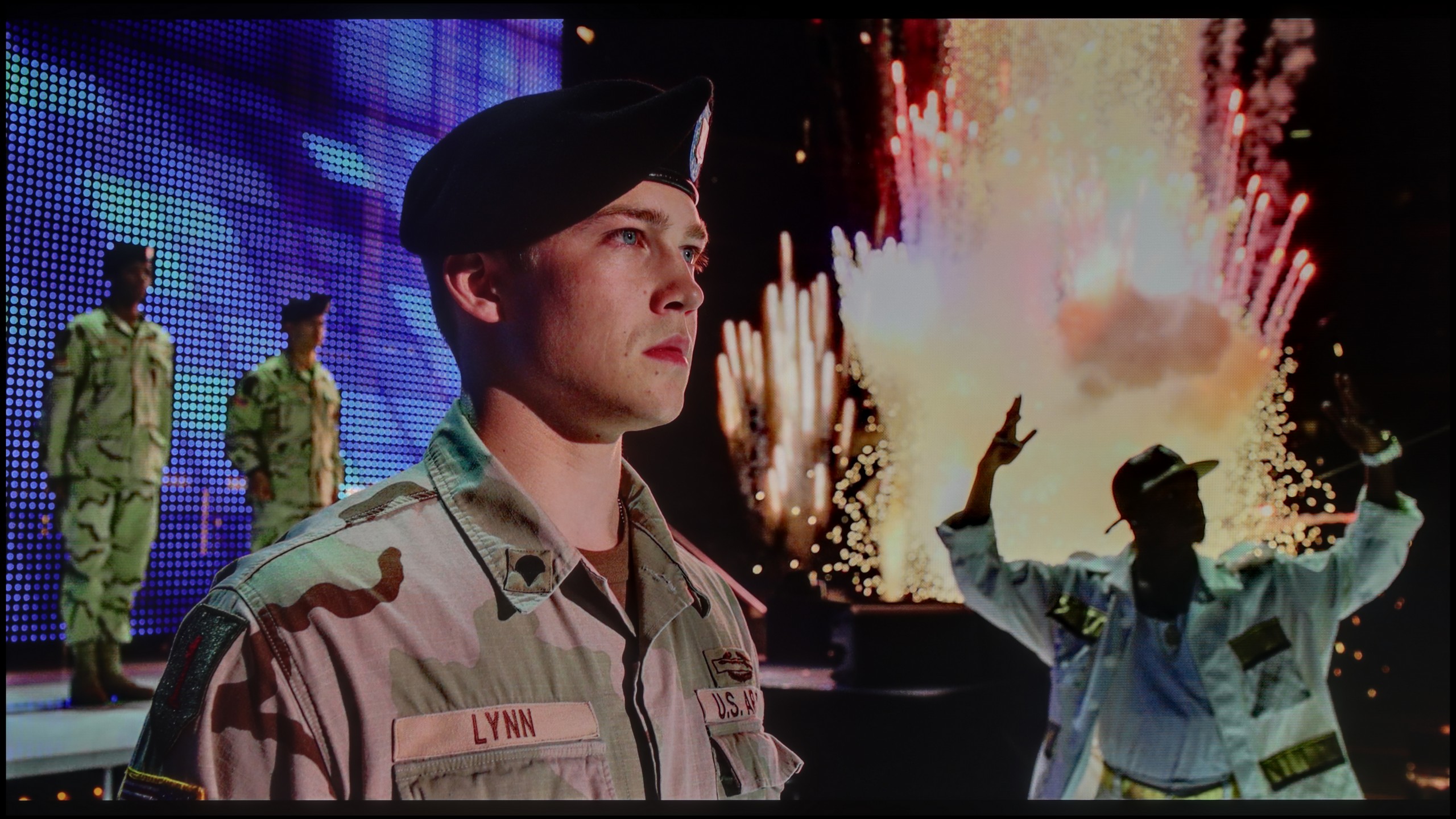
Static HDR10


Dynamic: Dolby Vision
Dynamic: Dolby Vision


HDR luminance chart:
Hisense E8Q
Luminancja HDR
Luminance of RGB colors
LG QNED91T6A
Luminancja HDR
Luminance of RGB colors
As befits a MiniLED television, LG QNED91T easily surpasses the magical barrier of 1000 nits on the luminance chart. In scenes where light played a key role, the effect was truly decent. For instance, 1000 nits in the first scene of "Life of Pi" is an impressive value, and the 600 nits achieved in the third and fifth scenes allowed one to feel the true magic of HDR. However, problems arise with very small light elements on the screen, such as the moon, street lamps, or lights. A value around 100 nits - to put it bluntly - is disappointing, as these elements are dark enough to be barely visible. The television deserves praise for covering 96% of the DCI-P3 colour gamut and 75% of BT.2020. LG QNED91T leaves us with very mixed feelings, mainly due to the very aggressive dimming algorithms, which, while effectively eliminating the halo effect, negatively impact the brightness of smaller elements.
Since the E8Q is a twin of the U7Q, it’s no surprise that the quality of the HDR effect is nearly identical. On paper, it looks promising – a peak brightness of 800 nits can impress in many scenes. Moments such as flashes of light in “The Meg” or shots of the sun in “Life of Pi” can indeed evoke a 'wow' effect. But the longer we watch, the more we notice the limitations. The problem arises when small, bright details need to be shown against a dark background. In such situations, the dimming algorithms try to preserve contrast but end up dimming what should shine the most. Instead of dazzling details, we get almost invisible points of light. This is typical for Mini-LEDs in this price segment and is not surprising – but it’s worth knowing that the HDR effect will not always be fully preserved. Fortunately, the colour performance offers reasons to be pleased. Coverage of the DCI-P3 colour gamut at around 94% is a very good result, and the applied layer of quantum dots (more precisely, PFS) does its job – the colours are saturated and vibrant, especially with 4K content.
Factory color reproduction
6/10
6.5/10


Factory Mode
After calibration
All our tests are conducted in the best picture mode on each television. In this case, as usual, it is the Filmmaker mode. The name of the mode suggests ideal colour reproduction; however, there were noticeable deviations from the correct image here. Our unit, in terms of white balance, displayed quite a strong dip in blue hues - both in SDR and 4K HDR content - which resulted in a distinct yellowing of the image, visible in comparison scenes from the film with Tom Cruise. As we mentioned earlier, QNED91T has certain tendencies to brighten the screen. This is confirmed by gamma, which is quite significantly below the reference value of 2.4. Meanwhile, the EOTF curve, responsible for brightness in 4K content, showed some issues with the television's dimming in the darkest areas, which we could observe in the paragraph describing the quality of the HDR effect. Although the Filmmaker mode is quite a good "out-of-the-box" mode, it too requires some adjustments.
Testing the Hisense E8Q in Filmmaker mode, we were hoping for a possibly neutral image close to the director's vision. Unfortunately – although it doesn't look bad on paper (the colour reproduction errors are not significant), in practice the image appears not entirely natural. The reason? An overly strong boost in blue colour and a lack of red in the white balance. The effect? Scenes look cool, and the white seems slightly bluish. Alongside the U7Q model, we also noticed a specific approach to brightness management here. The brightness mapping curve for HDR content (EOTF) shows that the television can significantly dim small, bright elements on the screen to maintain contrast – but sometimes it goes too far in this. On the other hand, larger, very bright areas can be excessively brightened, which disrupts tonal balance. This is a compromise that may not suit everyone – especially if you want an as faithful image as possible right out of the box.
Color reproduction after calibration
7.8/10
7.4/10



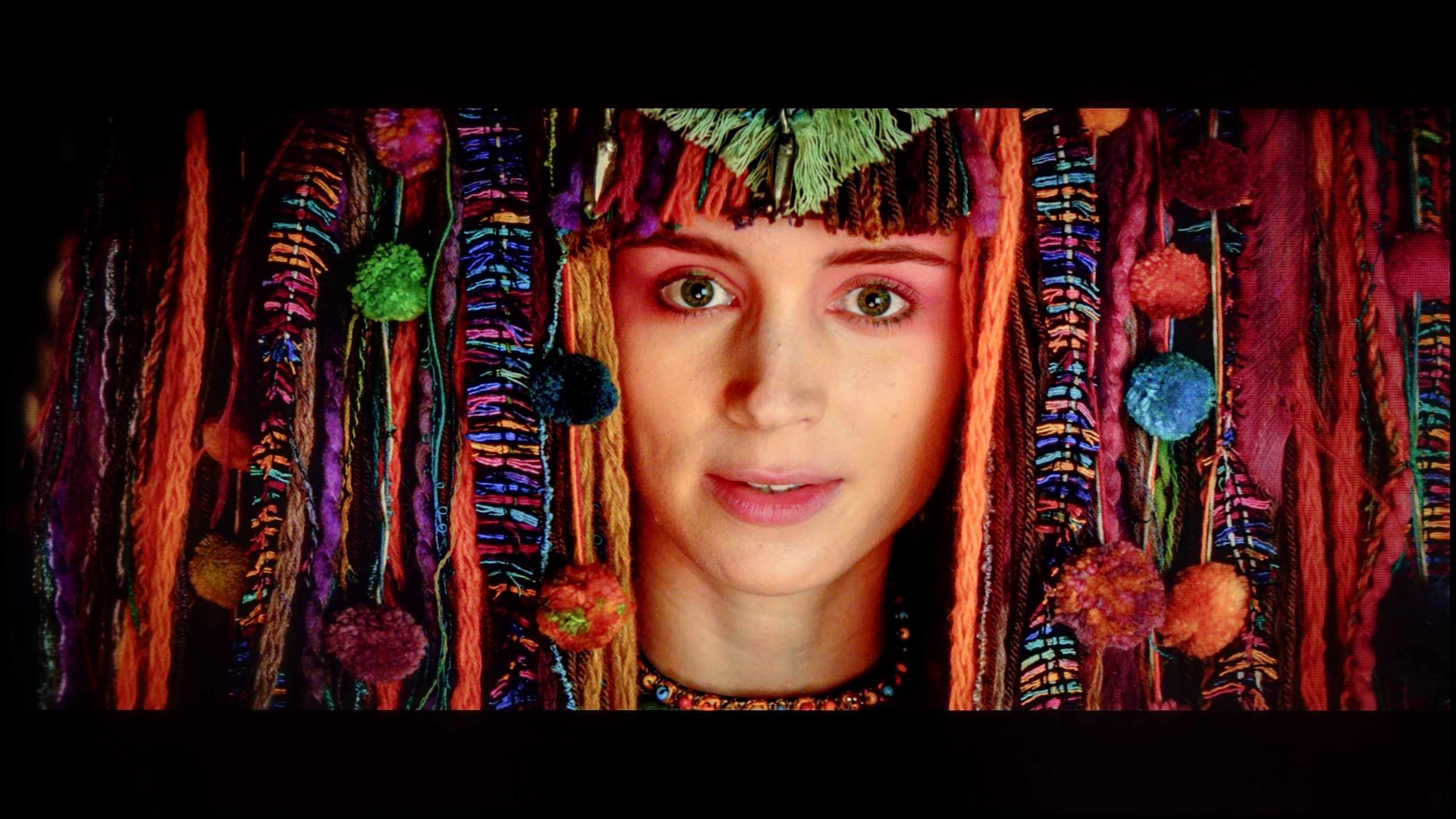
LG offers advanced calibration tools in its televisions such as 65QNED91T6A, which we utilised. When it comes to white balance, we were able to significantly correct it in SDR content. The picture mode in 4K HDR quality posed greater challenges, which, although still not perfect, looks significantly better than before calibration. Errors on the Color Checker palette and colour gamut are much smaller than in the factory settings. Regarding brightness characteristics, gamma for HD content is practically ideal, with a slight exception at the end of the graph. However, the television had the most trouble with brightness in 4K HDR content. Analyzing the EOTF characteristics in films, we observed that the television manipulates brightness quite heavily, which we could see in previous tests. Brightness is significantly boosted compared to the graph in the static test, and the television lights up certain scenes to the point that some smaller elements lose detail. This is unfortunately caused by the average backlight zone management algorithm in this model. Nevertheless, calibration yields quite good results, especially when it comes to the precise reproduction of colours.
The calibration of the Movie mode yielded really good results, especially when it comes to SDR content. We managed to balance the white levels, which made the image look more natural – it appeared almost reference-quality. The colours were well-saturated, and the overall perception of the content improved significantly. Unfortunately, when we switched to HDR materials, familiar issues from the U7Q model returned. The television still likes to "do its own thing," as evident from the analysis of the brightness characteristic EOTF – despite calibration, the E8Q still dimmed fine details in the shadows, while the bright areas of the screen could be excessively boosted. In practice, this means that in darker scenes, some of the smallest details could simply disappear. Although it must be acknowledged that the entire calibration process brought a lot of good, not everything can be circumvented – even with the use of professional tools. The E8Q can impress with its picture, but in HDR content, its design limitations become apparent, and it is worth keeping this in mind.
Smoothness of tonal transitions
8.5/10
9.9/10





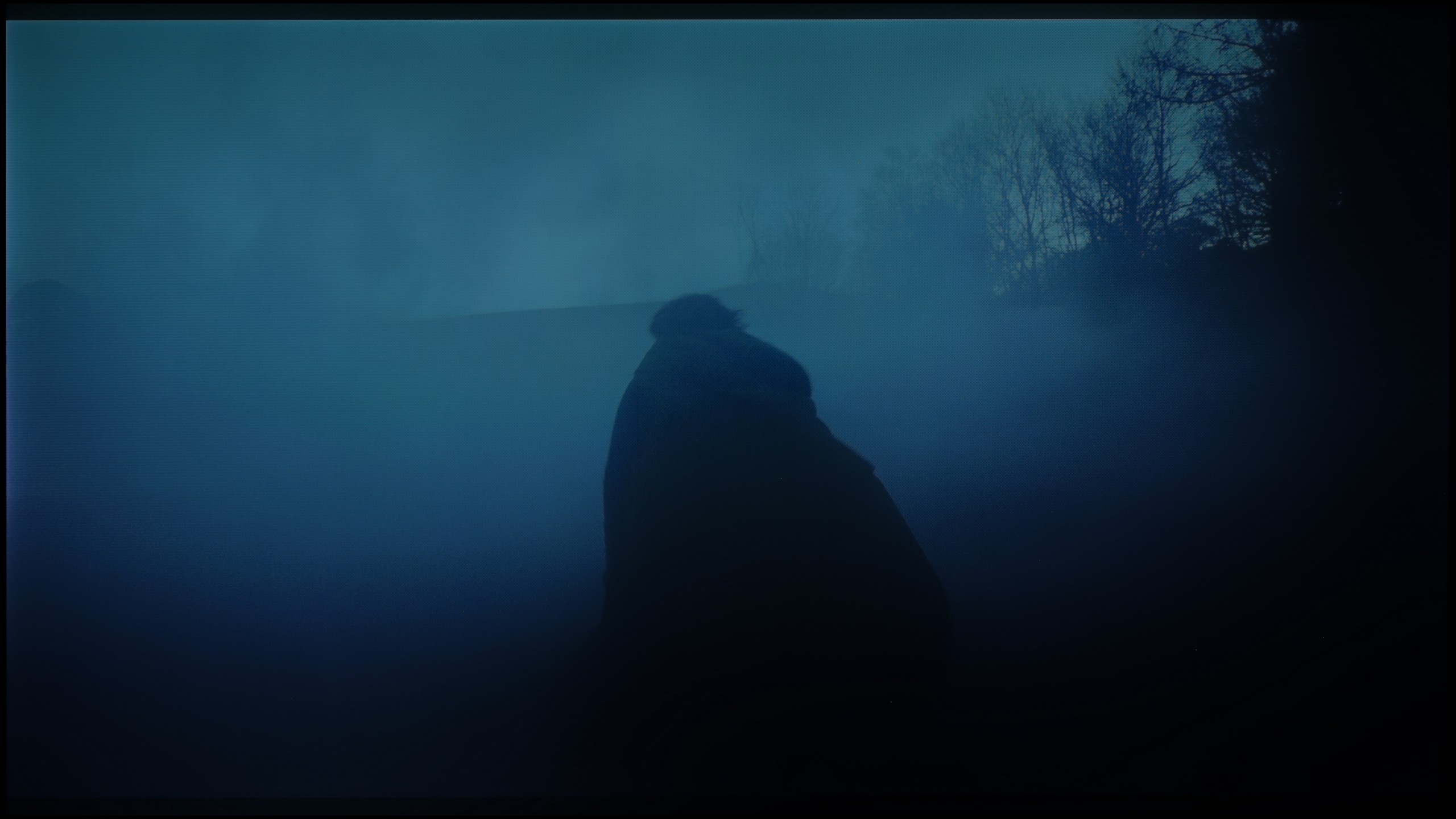

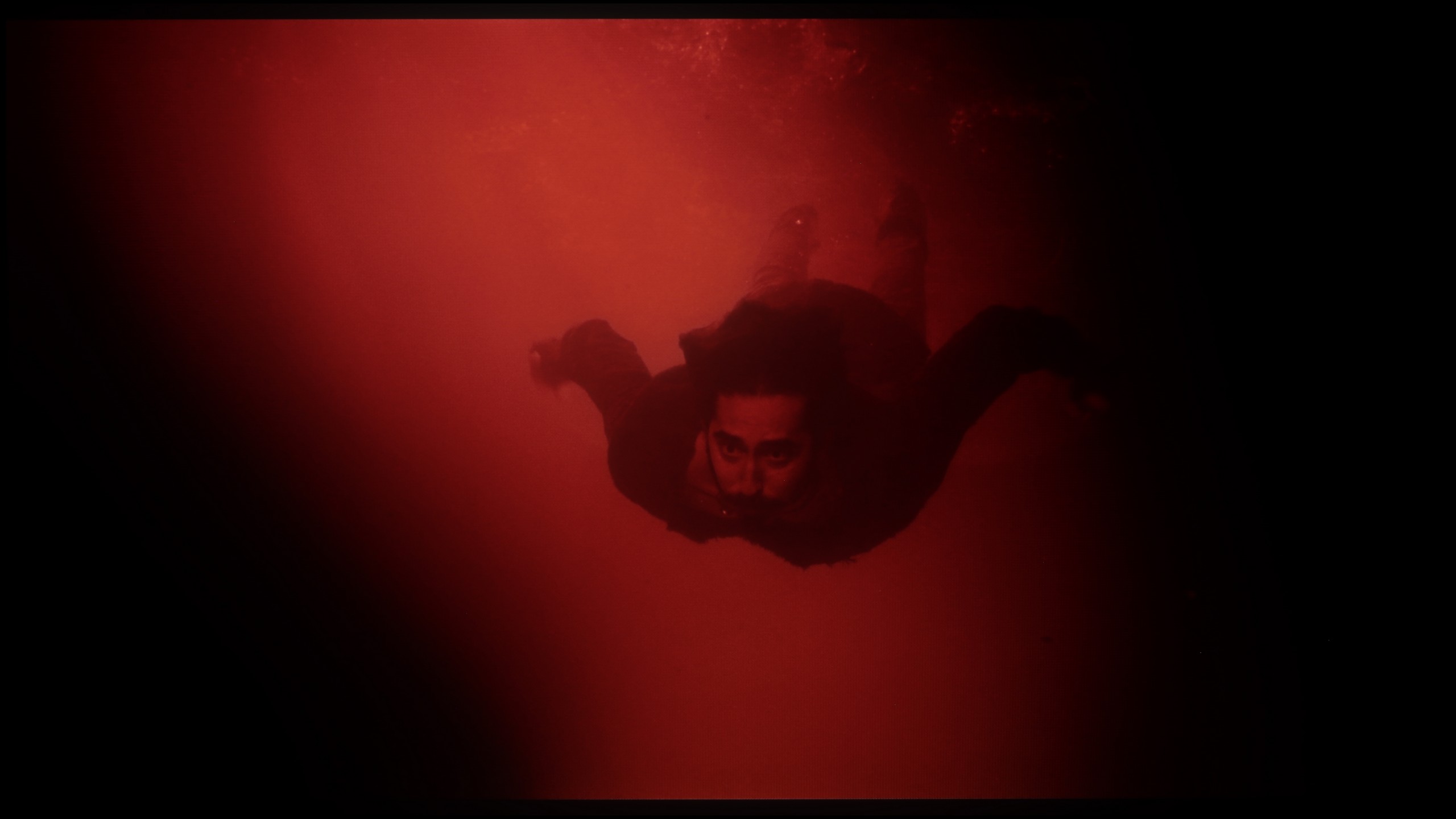




The gradation on the LG QNED91T looks very good. There are only slight cut-offs in the brightest scenes, but the television handles the black levels very well, ensuring smooth tonal transitions. As a result, the picture is natural and pleasant to the eye, without any visible issues.
In this category, the Hisense E8Q really demonstrates class. The transitions between colours are very smooth, with no 'banding' or clear boundaries between tones. The image looks natural, and the colour gradation is exceptionally good – even in more difficult scenes. If there are any minor imperfections, they are subtle enough not to be noticeable. It's hard to nitpick here – it looks almost flawless.
Image scaling and smoothness of tonal transitions
7.5/10
6/10
Smooth transition function


Image without overscan on the SD signal


When it comes to tonal transitions in lower quality materials, the television offers a well-known feature from LG televisions - "Smooth Gradation". We can control it in three levels: low, medium, and high. We recommend using the medium option, as it does a good job of removing tonal transitions without causing noticeable problems with the removal of object structure or other artefacts.
As for image scaling (upscaling), LG's Alpha processor performs quite well in this regard. The image appears very plastic, with slight aliasing on some elements, which does not significantly affect the quality. It looks really okay, and the overall effect is very satisfactory.
In the case of older materials with lower quality, a gentle smoothing of tonal transitions often comes in handy. The Hisense E8Q, like the U7Q, features an "Smoothing and Gradient Image" function, but unfortunately – its effectiveness leaves much to be desired. The "Low" mode is almost imperceptible in operation, and the higher settings do not improve transitions but simply blur the details. The good news is that the function does not compromise film grain, meaning it does not worsen the structure of the image. On the plus side, scaling is commendable. The television is able to sensibly upscale older content to a higher resolution – without artificially accentuating contours or excessive sharpening. Although it does not match the best models in this category, it performs quite well for its class.
Blur and motion smoothness
7.5/10
7.5/10


Blur (native resolution, maximum refresh rate):



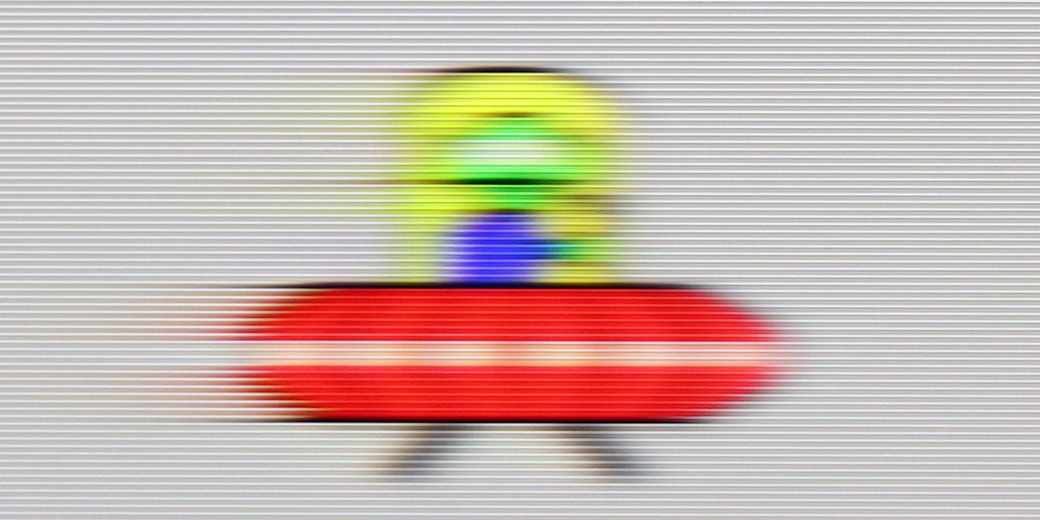
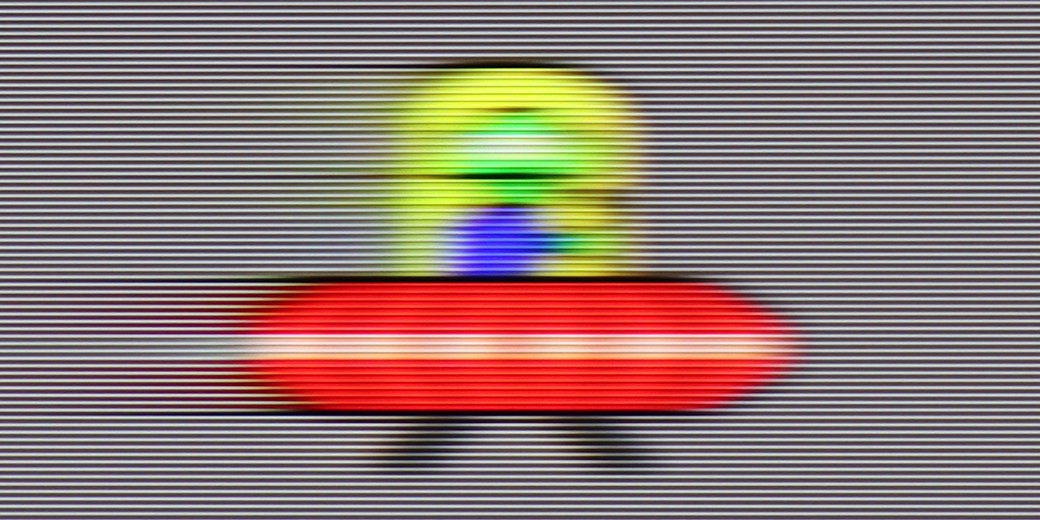
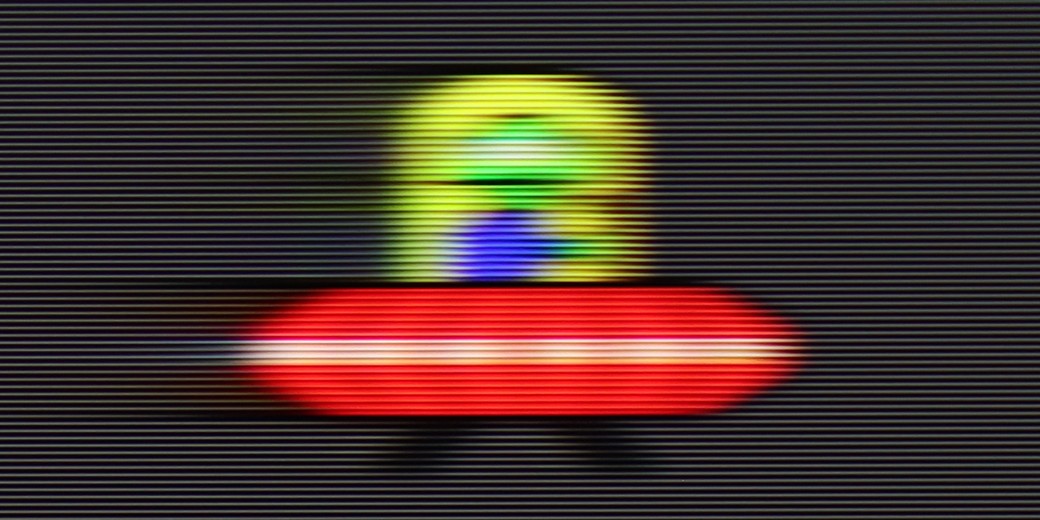
Blur (BFI function enabled):




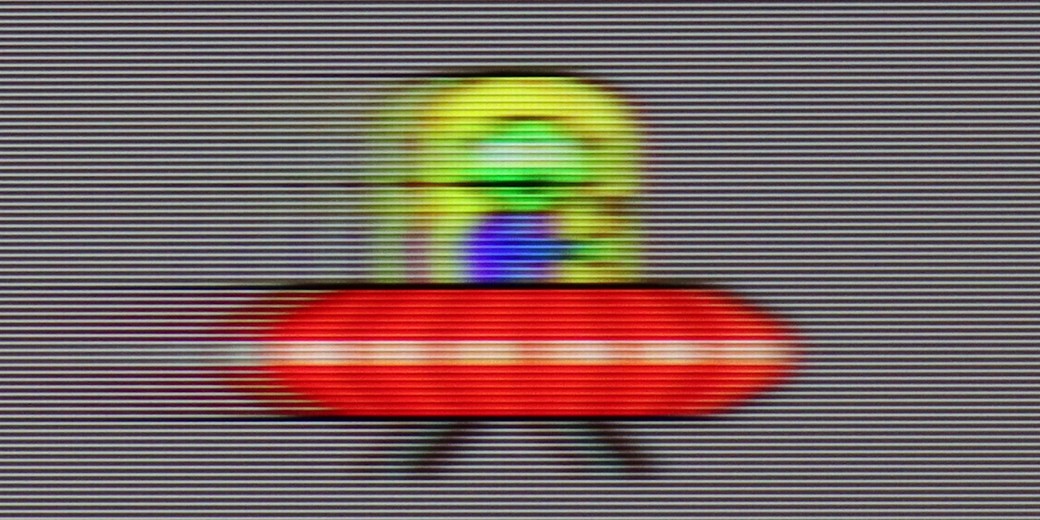
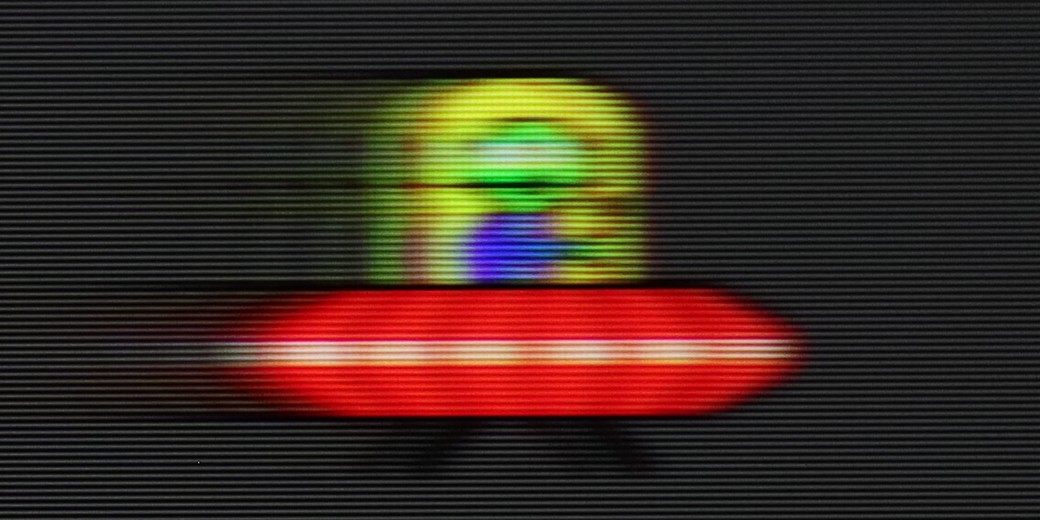
Smużenie ():
Smużenie (4K 120Hz):
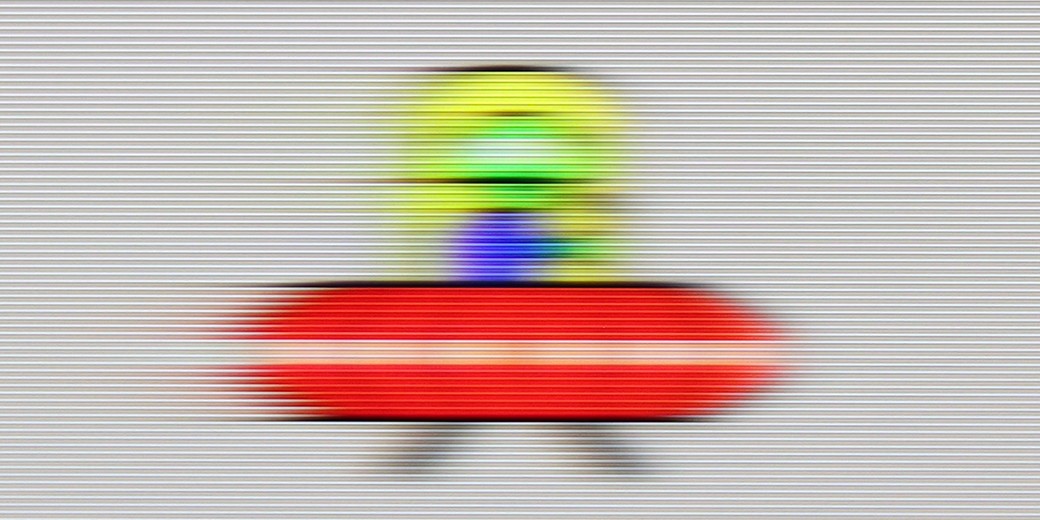
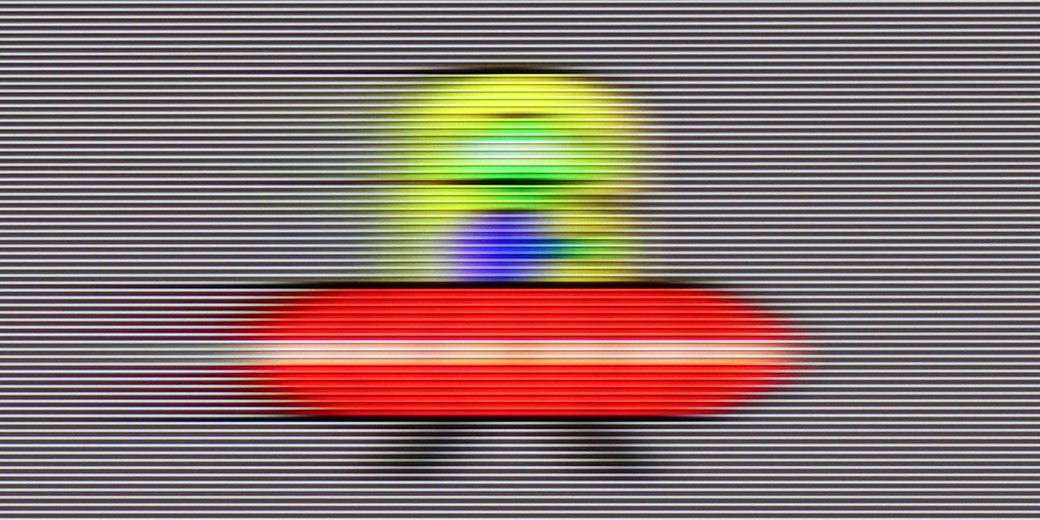
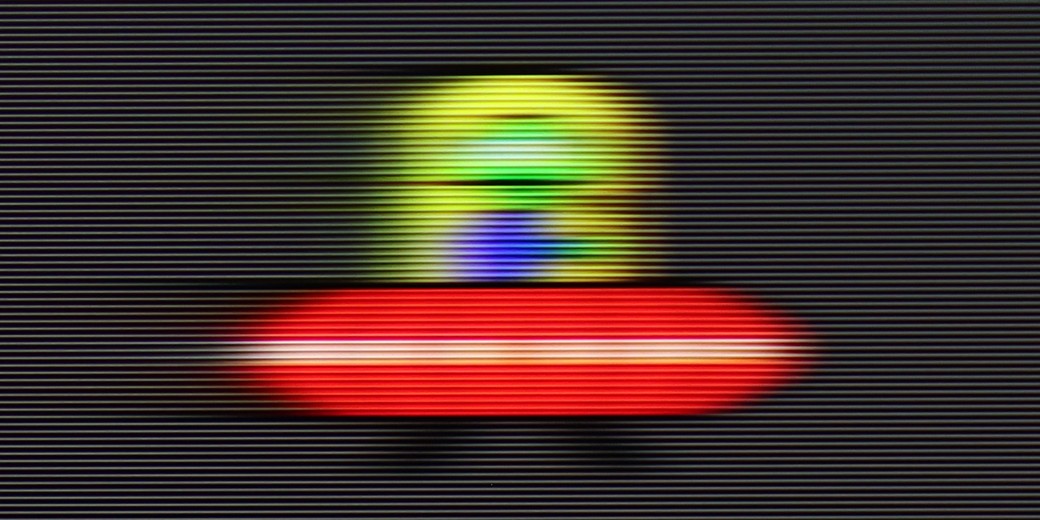
The television has a refresh rate of 120 Hz, which should satisfy most users in terms of motion smoothness. Additionally, QNED91T is equipped with the TruMotion feature, which allows for smoother image display in films. Within this feature, we can adjust the "De-Judder" and "De-Blur" sliders. The "De-Judder" slider is responsible for reducing judder in films, which is particularly useful when playing content with a lower frame rate, while "De-Blur" helps to reduce blur in fast scenes, which is important for sports or dynamic shots.
Similar to the U7Q, the E8Q model is a fast television designed for dynamic content. It supports a refresh rate of 144 Hz at 4K resolution, and if, for some reason, someone is still gaming in Full HD – it can even reach 240 Hz. This is a significant advantage, especially for PC users looking for maximum smoothness. In everyday use, the television performs very well. The "Ultra Motion Smoothness" mode offers two sliders that allow you to customise the picture to your preference – whether more cinematic with the film frame preserved or highly smoothed, almost "series-like". It's good that the manufacturer provides a choice here instead of imposing one style. On sports material, live broadcasts, or in games – movement looks clean and stable. Of course, it is not at the OLED level, but for this price range, the E8Q performs really well.
Console compatibility and gaming features
9.8/10
8.5/10
- ALLM
- VRR
- VRR range48 - 120Hz48 - 240Hz
- Dolby Vision Game Mode
- Correct implementation of HGIG
- 1080p@120Hz
- 1440p@120Hz
- 4K@120Hz
- Game bar



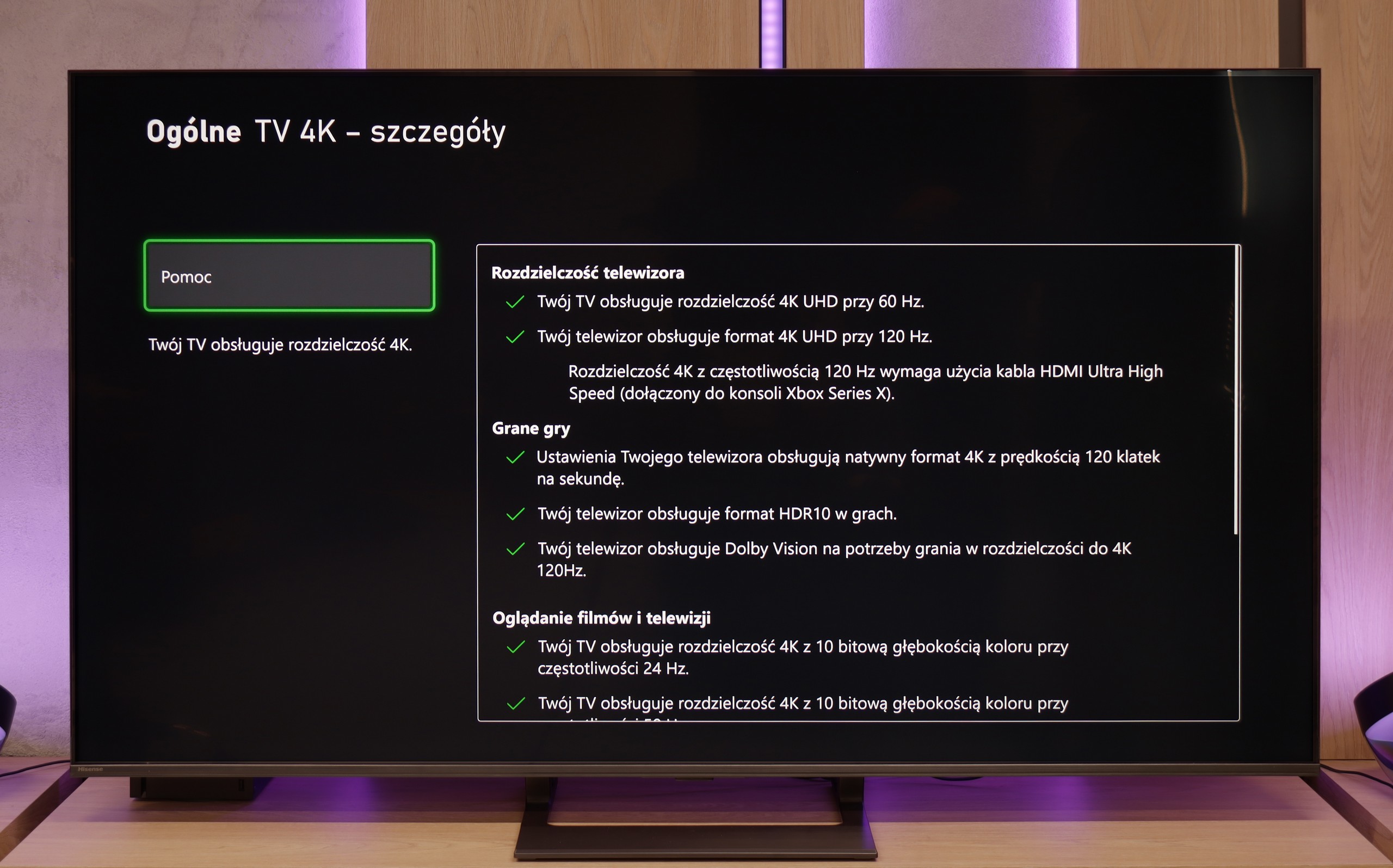

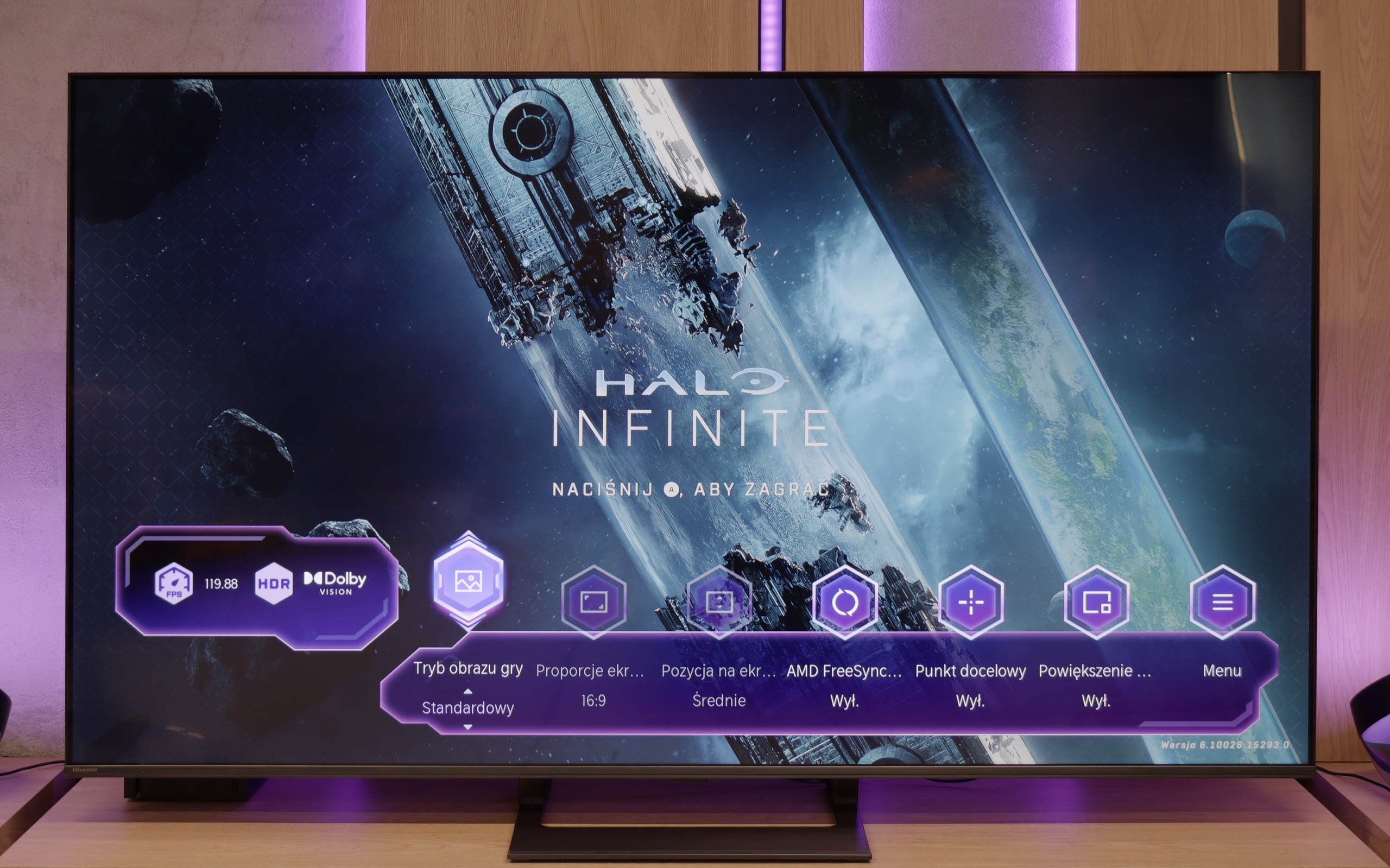


The LG 65QNED91T6A television is equipped with HDMI 2.1 ports with full bandwidth of 48 Gb/s, providing full support for all the standards needed for gaming on modern consoles. We can count on variable refresh rate (VRR) support and automatic low latency mode (ALLM). This ensures smooth gameplay without delays.
Thanks to support for all popular HDR standards in games, such as HGiG and Dolby Vision, we can fully utilise the potential of the PS5 and XBOX One consoles. The television also handles lower resolutions than 4K without any issues, so even older consoles look good on it. The Game Bar makes it easy to access gaming-related settings, allowing us to quickly and intuitively adjust picture parameters and features for gamers. Additionally, the QNED91T offers the NVIDIA GeForce Now feature, which allows us to play in the cloud without needing a console. However, it should be noted that this solution is quite costly and somewhat falls short of the Xbox Game Pass, which is available only on Samsung televisions.
QNED91T LG is an excellent choice for both less experienced and more advanced gamers looking for a versatile television for gaming.
Hisense E8Q does not hide its gaming heritage. Even the specifications reveal that we are dealing with a television that will perform excellently as a gaming screen. Variable Refresh Rate (VRR)? It's there. Automatic switching to game mode (ALLM)? That's there too. Additionally, there is impressive refresh rate – 120 Hz in 4K or even 240 Hz in Full HD. Such a set is rare in this price segment. Everything works smoothly and without major surprises. The only missing element – similar to the U7Q – is support for HGiG. It’s a shame, as this feature facilitates adjusting the brightness curve to the capabilities of a specific television, improving visual compatibility with the intentions of HDR game creators. Without it, one has to manually fiddle with the settings, which does not always yield a satisfactory result.
Input lag
9.8/10
9.7/10
SDR
HDR
Dolby Vision
The input lag on QNED91T is really very low, even in Dolby Vision mode. This means we can rely on a fast response time, which is very important in dynamic games where every millisecond counts. Regardless of whether we are playing in standard mode or HDR, the television offers very good results that will satisfy even the most demanding gamers.
The E8Q handles delays very well. For 120 Hz materials, the input lag is super low – practically unnoticeable even for more demanding gamers. At 60 Hz, the values are slightly higher, but still comfortably within the "placebo" limit – there’s nothing to complain about. The biggest increase in delay was observed in Dolby Vision Gaming mode. The television then requires more time to process the signal, but even in this case, it doesn’t exceed 30 ms. While these may not be perfect values, for most gamers – especially console gamers – this will not be a hindrance.
Compatibility with PC
7.5/10
8.6/10


When it comes to gaming on a computer, LG QNED91T easily synchronises with NVIDIA graphics cards and supports G-Sync functionality. The very low input lag makes gaming on a personal computer truly enjoyable. The television supports chroma 4:4:4, which provides excellent text readability. Although we noticed slight blurring of fonts around the edges, overall the image looks very good, and readability is at an acceptable level.
In terms of collaboration with the computer, the E8Q performs really well. It supports chroma 4:4:4 at full 4K resolution and at the highest refresh rate, so the readability of fonts – even the smallest ones – is at a very good level. There are some minor blurriness issues with exceptionally thin fonts, but in everyday use, this is hard to consider a serious problem. A nice addition for PC gamers is the ability to achieve up to 288 Hz at lower resolutions. The E8Q communicates effortlessly with powerful graphics cards, making it an interesting choice not only for movies or consoles but also for gaming on the computer.
Viewing angles
3.4/10
3/10
As we mentioned in the paragraph about contrast, the television is equipped with a VA panel, which generally offers very good contrast compared to IPS panels. Unfortunately, VA panels have their weakness in the form of limited viewing angles, a weakness that is also evident in the case of QNED91T LG. The viewing angles here are not the best, and although the use of an angle-expanding coating could significantly improve the situation, unfortunately, it is not present here. As a result, the picture loses quality when viewed from a larger angle, which can be problematic when there are multiple people watching at the same time.
E8Q, like most TVs with a VA panel, looks best when we sit directly in front of the screen. In this position, one can expect deep blacks, good colour saturation, and high contrast. Unfortunately, it only takes a slight shift to the side for the image quality to diminish – colours begin to fade, and blacks become more grey than black. This is not surprising, but it is worth keeping in mind, especially if we plan to watch with a larger group from different spots in the living room. As a consolation – in return, we get significantly better black levels than in IPS panels.
TV efficiency during daytime
6.1/10
6.2/10



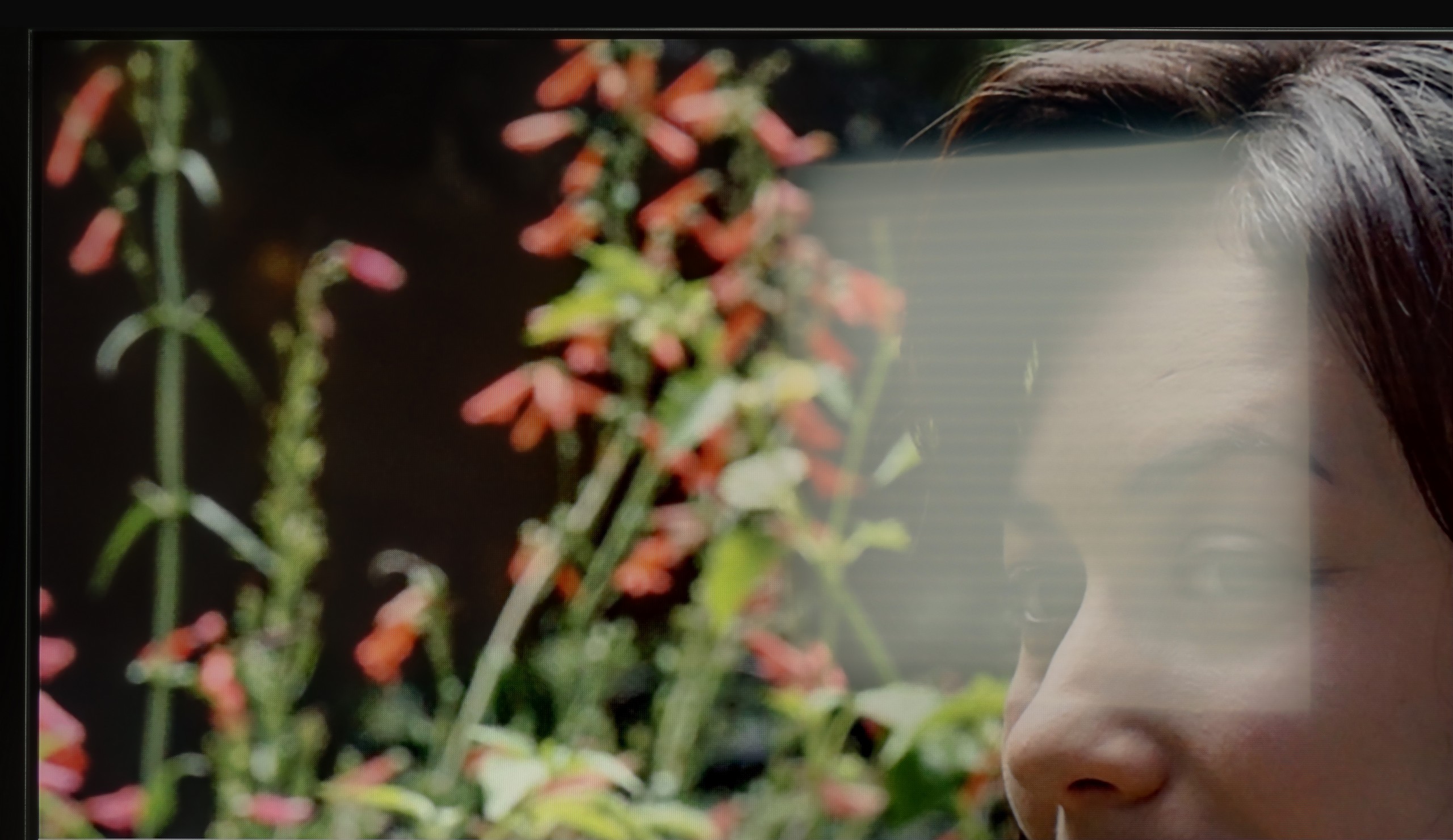
Matrix brightness
Average luminance SDR
Hisense E8Q: 504 cd/m2
LG QNED91T6A: 573 cd/m2
The LG 65QNED91T6A television is equipped with a satin panel, which performs moderately with direct reflections of light, such as from lamps or wall lights. In the first test photo with a large lamp, you can see how the reflection "spreads across the screen". However, the QNED91T makes up for this in terms of brightness - the average SDR brightness of 580 cd/m² is sufficient for watching television even in more challenging lighting conditions. As a result, despite the issues with reflections, the television performs well during the day.
Hisense E8Q is not afraid of bright interiors. Even if it is full sunlight outside, the television can maintain good image clarity. With a brightness level of around 500 nits, it is perfectly fine to watch content during the day without the feeling that everything is drowning in glare. The satin coating on the screen also helps to nicely suppress reflections – it does not eliminate them completely, but reduces them enough so they do not interfere with daily viewing.
Details about the matrix
Subpixel Structure:

Panel uniformity:

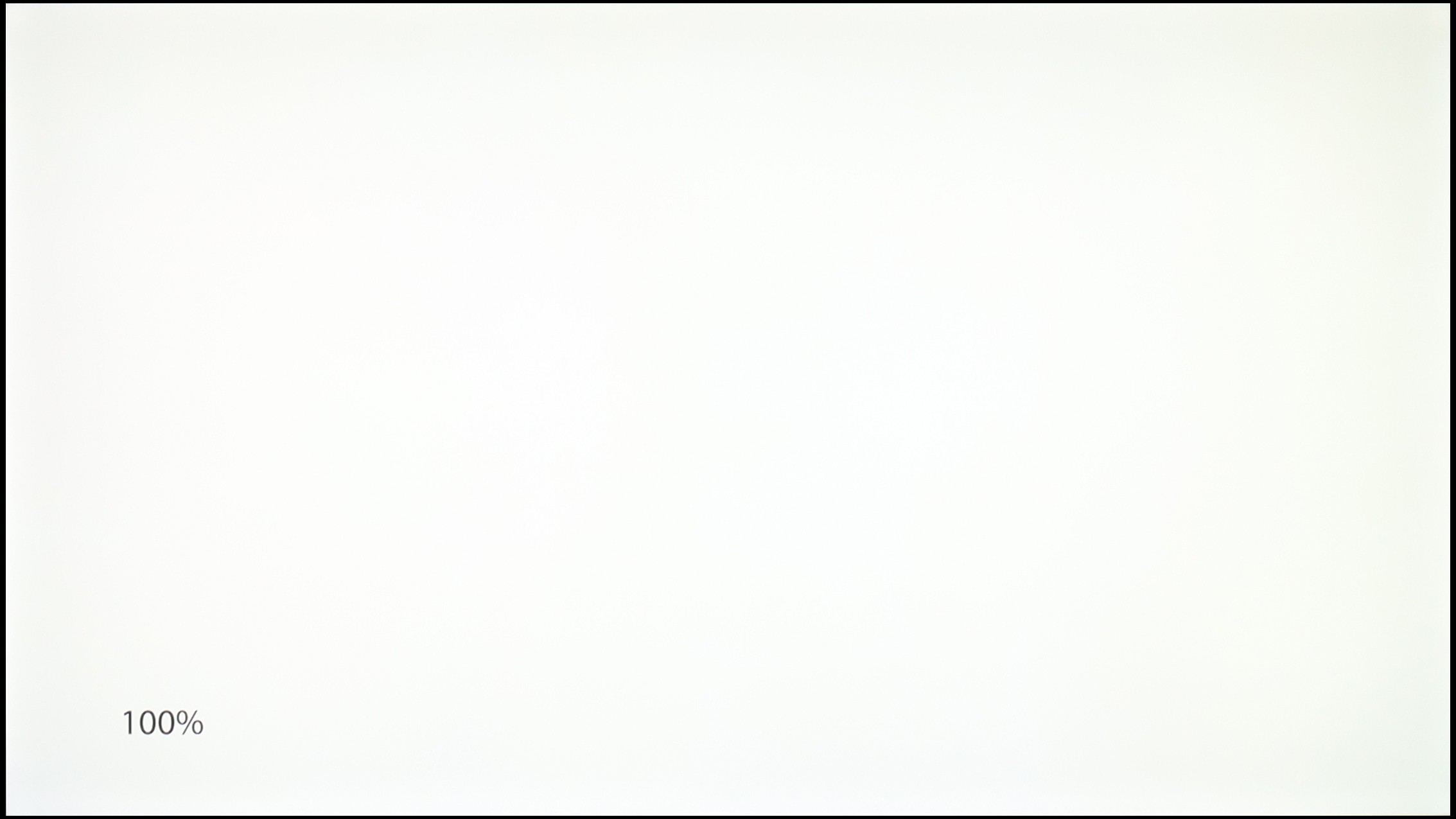
LG QNED91T6A
Hisense E8Q
TV features
9/10
8.9/10
- HDMI inputs0 x HDMI 2.0, 4 x HDMI 2.1 48Gbps2 x HDMI 2.0, 2 x HDMI 2.1 48Gbps
- Other inputsRCA (Chinch)
- OutputsToslink (Optical audio), eARC (HDMI), ARC (HDMI)Toslink (Optical audio), eARC (HDMI), ARC (HDMI), Mini-Jack (Headphones)
- Network InterfacesWi-Fi 2.4GHz, Wi-Fi 5GHz, Ethernet (LAN) 100MbpsWi-Fi 2.4GHz, Wi-Fi 5GHz, Ethernet (LAN) 100Mbps
- TV receptionDVB-T, DVB-T2, DVB-S, DVB-S2, DVB-CDVB-T, DVB-T2, DVB-S, DVB-S2, DVB-C
Classic features:
- Recording to USB (terrestrial TV)
- Recording programming
- Picture in Picture (PiP)
- RF remote control (no need to aim at the screen)
- Backlit remote control
- Teletext
- Audio only mode
- Possibility to connect Bluetooth headphones to the TV
- Possibility to simultaneously use Bluetooth headphones and the TV speaker
Smart features:
- AirPlay
- Screen mirroring (Windows Miracast)
- Wyszukiwanie głosowe
- Voice search in native language
- Ability to connect a keyboard and mouse


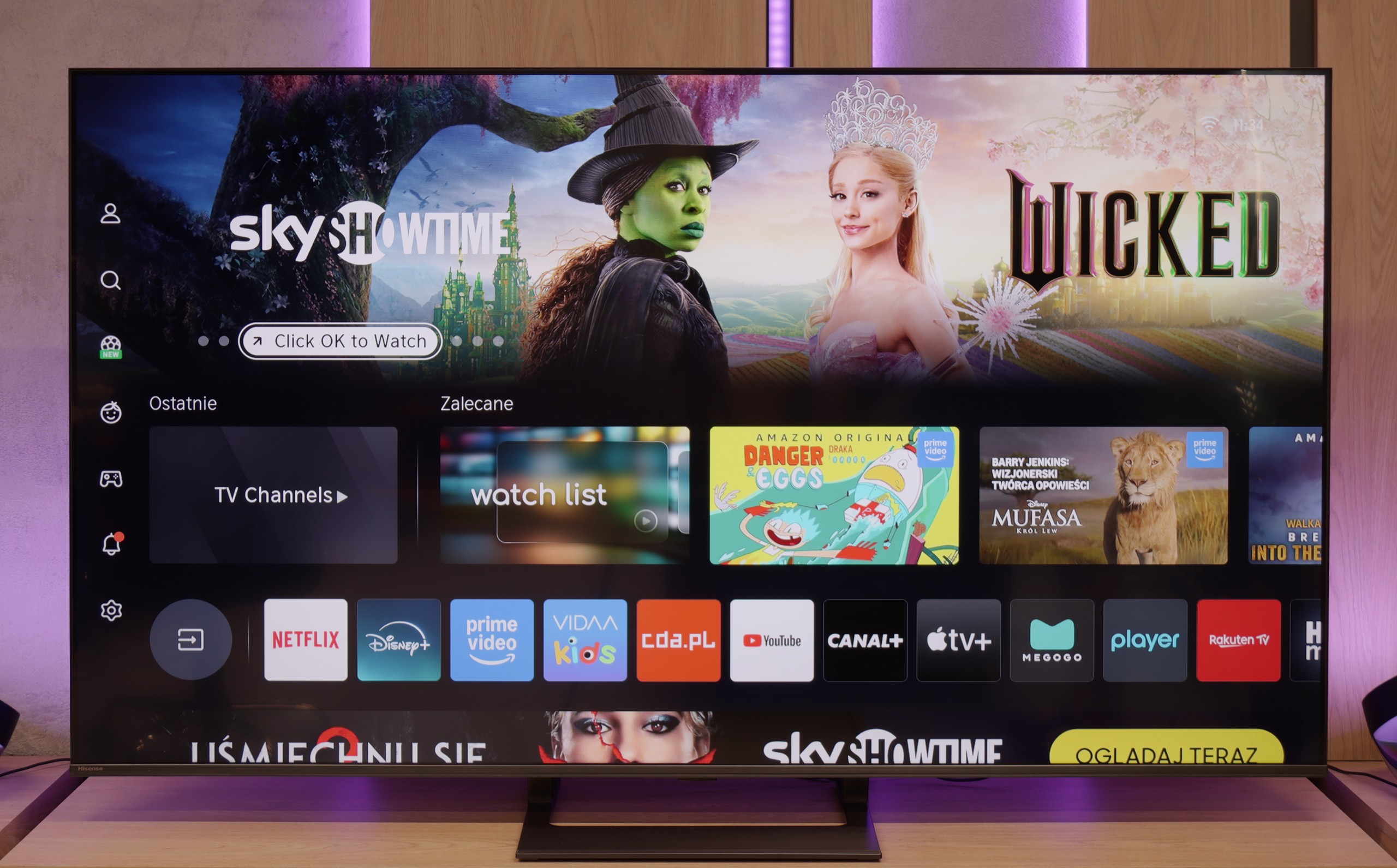
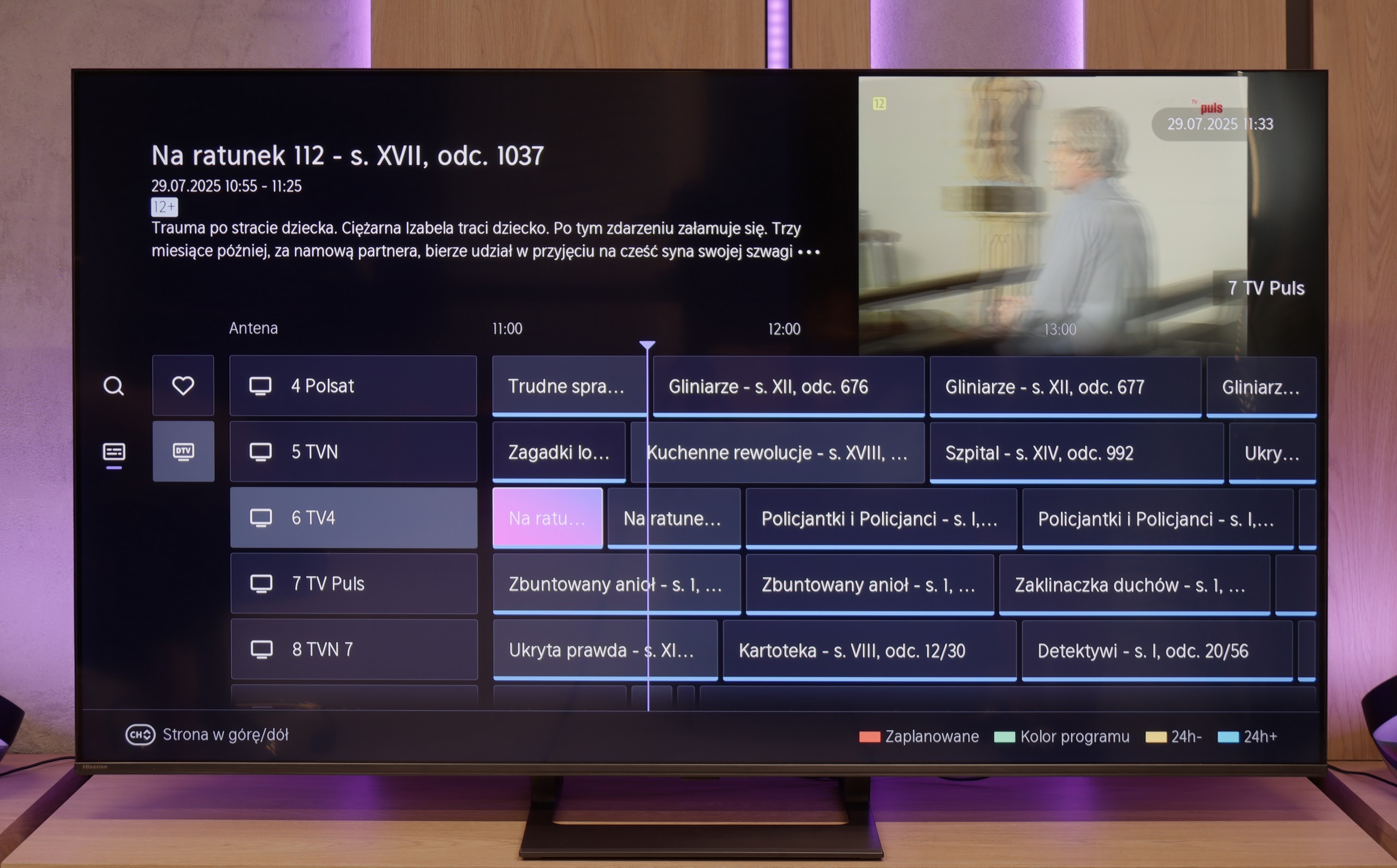


The most important thing in today's televisions, besides picture quality, is the operating system. The one available in LG models is really very good. Of course, we are talking about the WebOS system, which offers most of the popular applications available in Poland, similar to GoogleTV. What sets this system apart is primarily the excellent remote control with an accelerometer - the Magic Remote, which resembles a magic wand. Controlling with this remote is incredibly convenient. Additionally, the television offers a very good voice assistant that understands Polish perfectly.
In terms of user functions, the television offers practically everything one could desire. Here we find the ability to record programmes from built-in tuners, support for AirPlay to connect an iPhone, and a mirroring function. We can easily connect keyboards, mice, or headphones, although keyboards are not essential thanks to the convenient Magic Remote. Unfortunately, it lacks the PiP (Picture-in-Picture) function, but this is such a specific feature that only those who truly need it will feel its absence. The QNED91T is a television that does not disappoint when it comes to daily enjoyment of its use.
Classic Features – E8Q
The Hisense E8Q is not just equipment for gamers or movie enthusiasts – it can also serve as a daily television for the whole family. We can record programmes to USB, connect headphones or speakers via Bluetooth, and the entire interface – including the channel guide – is clear and easy to use. The only thing missing is the PiP function, but apart from that, the set of classic features is really comprehensive.
Smart TV – VIDAA System
The E8Q operates on the VIDAA system, which becomes more refined year after year. Voice search in Polish works flawlessly, and it's easy to stream content from your phone (AirPlay and screen mirroring). The system itself runs smoothly without hiccups, although – as is often the case with closed platforms – there may occasionally be one or two less popular apps missing. Therefore, it's worth checking before purchase whether everything we use on a daily basis is available there.
Playing files from USB
8.5/10
8.2/10
Supported photo formats:
Maximum photo resolution:

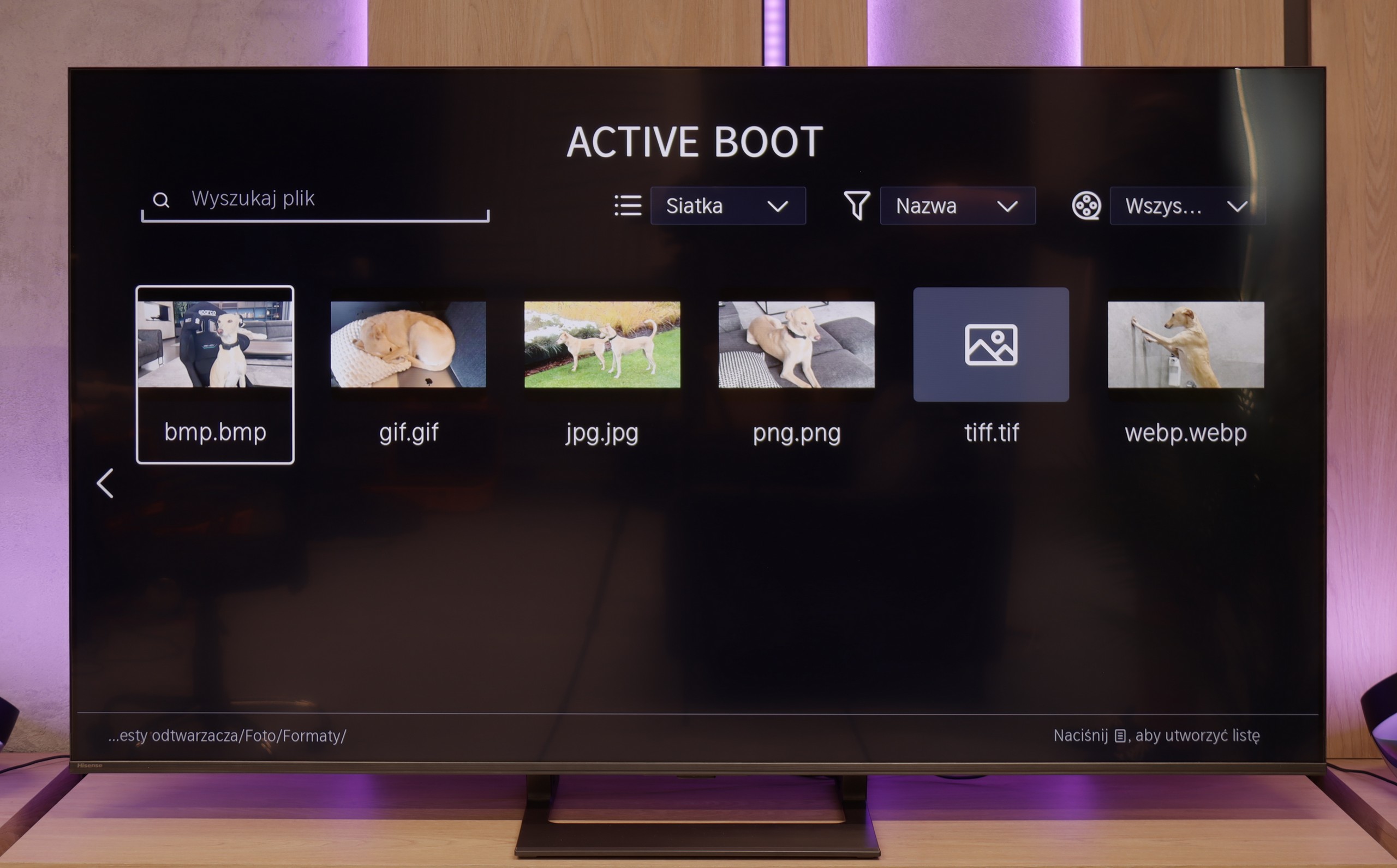
The built-in player in QNED91T should satisfy most users. It easily handles Polish characters and plays films with subtitles from external drives. The player will also cope with most audio and photo formats, except for Apple HEIC files.
The built-in media player in the E8Q performs quite well. It supports most popular video and audio formats, and files from USB drives or external disks play without any major issues. Polish characters? They are supported. Subtitles? They work. The only minor drawback is the occasional problem with displaying high-resolution photos – especially those from cameras or smartphones. So, if you plan to show holiday photos on the big screen, it’s worth checking beforehand whether they all load correctly from disk memory or a USB drive.
Apps
8.3/10
7.7/10














































Sound
6.9/10
5.5/10
- Subjective sound quality:6.9/105.5/10
- Dolby Digital Plus 7.1:
- Dolby True HD 7.1:
- Dolby Atmos in Dolby Digital Plus (JOC):
- Dolby Atmos in Dolby True HD:
- DTS:X in DTS-HD MA:
- DTS-HD Master Audio:
LG QNED91T is equipped with a set of 4 speakers in a 2.2 configuration with a total power of 40W. The television sounds quite pleasant, and the subtle bass is noticeable. Of course, it is not at the level of an external audio system, such as a soundbar or home cinema, but it is sufficient for everyday use. It is also worth praising the support for audio formats DTS:X and Dolby Atmos, which significantly enhance the quality of sound experiences.
Unfortunately, the Hisense E8Q did not make the best impression on us. Although on paper it has speakers with a power of 40 W (which is only slightly less than 50 W in the U7Q), in practice the difference is significant – and unfortunately not in favour of the E8Q. During testing, it quickly became apparent that something was amiss. When the volume was turned up above 40–50%, the entire back casing began to resonate, and unpleasant crackling sounds came from the TV. Even during regular viewing, it was hard not to notice this, and certainly – to not hear it. In this form, it is difficult to speak of listening comfort. We do not rule out that this was an issue with a specific test unit, but nonetheless – it is worth keeping this in mind. If you care about good sound, consider connecting a soundbar or… just go for the U7Q, which performs significantly better.


